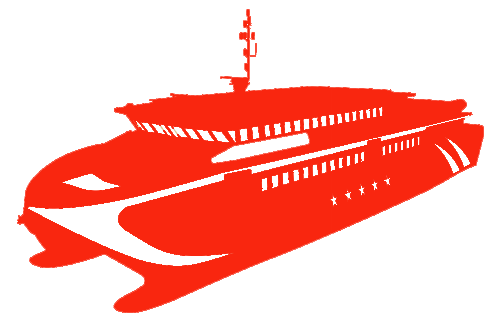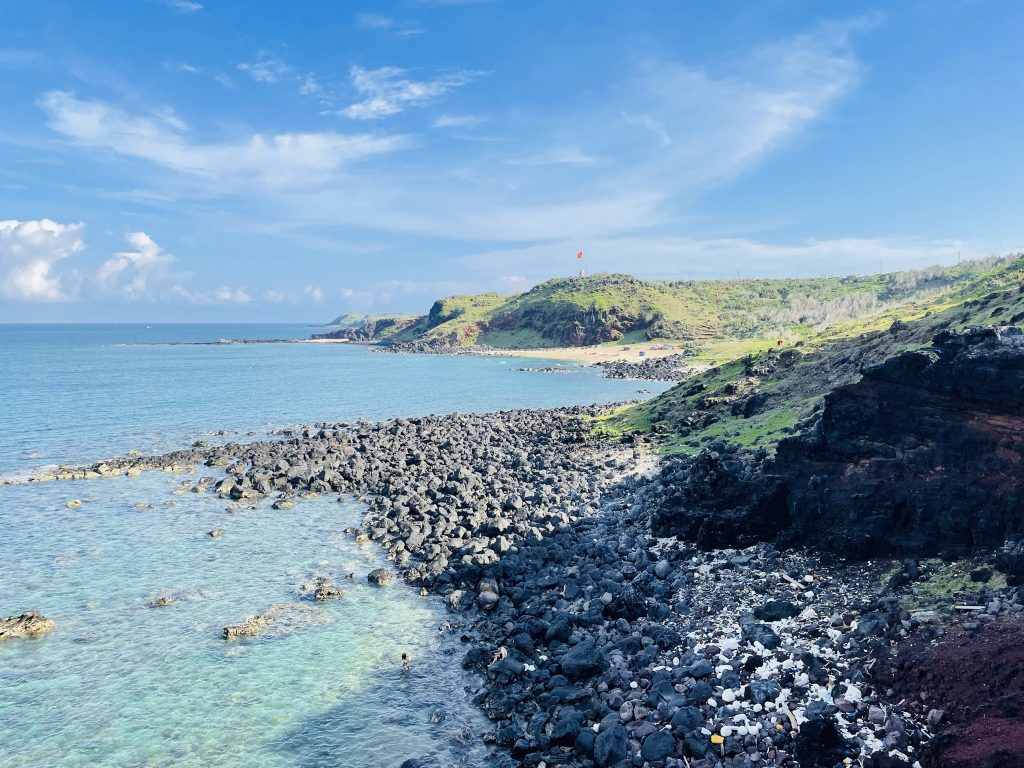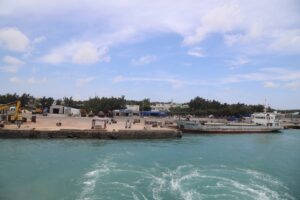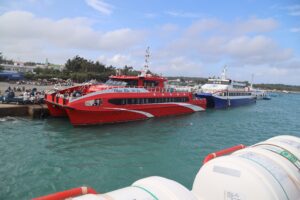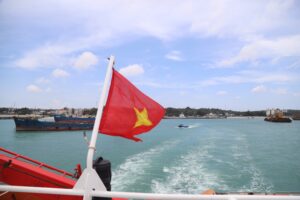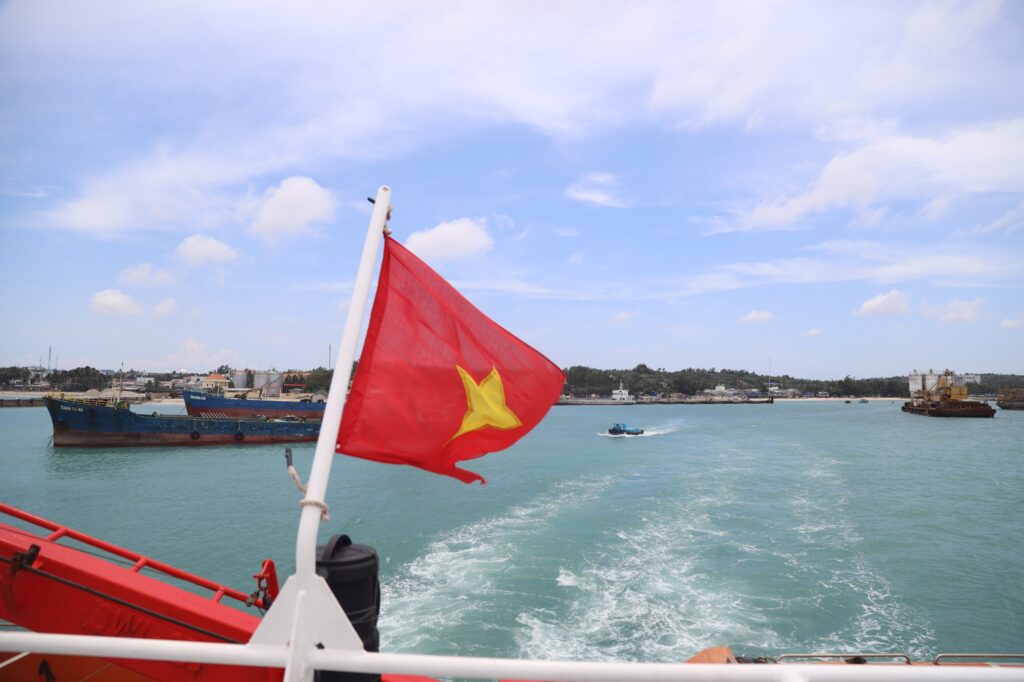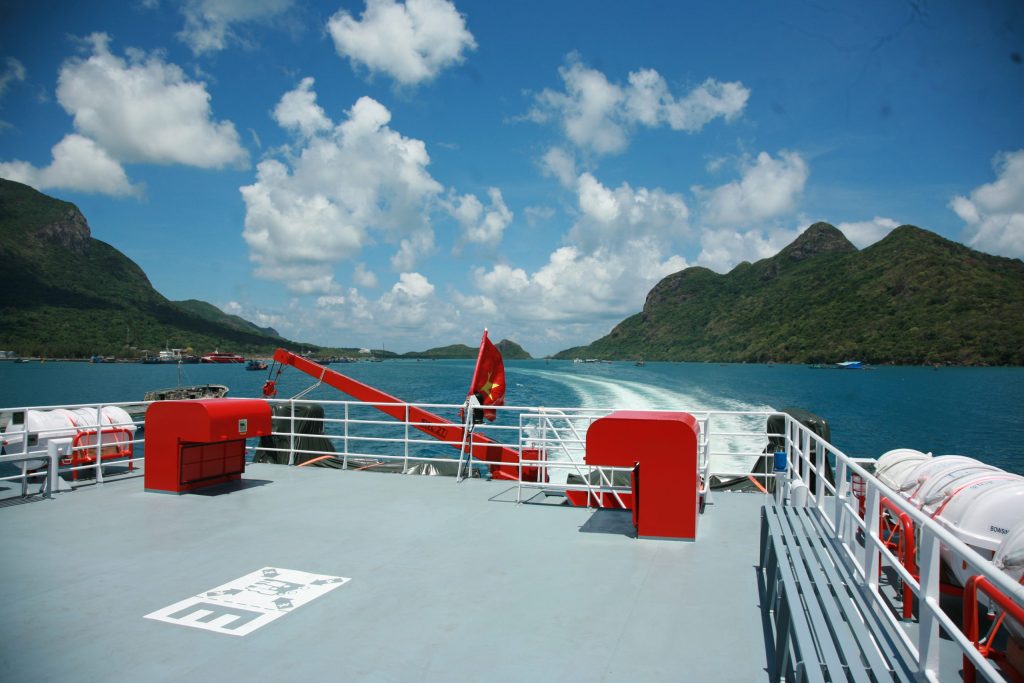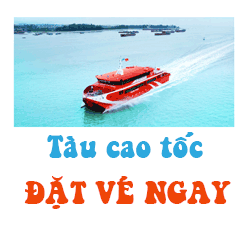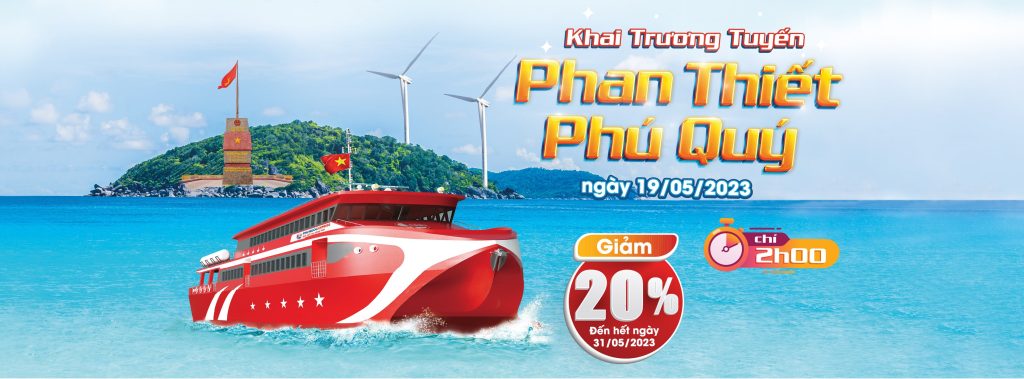Based on our field surveys and firsthand experiences in Phu Quy Island, we suggest the following tourist routes for travel agencies to consider when designing suitable tour programs.
Route: Triều Dương Bay – Phú Quý Flagpole – Bãi Nhỏ – Gành Hang
This route is located in the northwest of Tam Thanh commune, about 5 km from the district center (Ngũ Phụng commune). The travel time from the accommodation area to the first stop is around 5 minutes by motorbike.
Triều Dương Bay is the first destination and one of the most attractive spots for both tourists and locals. It features a long stretch of white sand, crystal-clear water, and a large casuarina forest. From here, visitors can see Hòn Tranh in the distance. This is a perfect place for swimming, picnicking, and taking memorable photos.
From Triều Dương Bay, follow the coastal road for about 500 meters to reach Phú Quý Flagpole – a landmark asserting Vietnam’s maritime sovereignty. Visitors can hike up Chuoi Hill, engage in storytelling contests about local history, and enjoy the tranquil atmosphere.
Continue along the coastal road for about 700 meters to reach Bãi Nhỏ – Gành Hang, a geological site of interest with spiral-shaped black rock formations. Visitors can study the rock structures, stroll along the white sand beach with clear water, watch the sunrise or sunset, and immerse themselves in the island’s stunning natural scenery.
After an exciting journey, travelers can stop by roadside vendors for fresh island coconut water – sweet and refreshing, enhanced with a pinch of salt and the warmth and hospitality of the locals.
This route is ideal for beach lovers, weekend picnickers, foodies, families, and those interested in outdoor sports or snorkeling.
Route: Mộ Thầy – Cao Cát Mountain – Linh Sơn Pagoda – Công Chúa Bàn Tranh Shrine
This route is in Long Hải commune, about 10 km from the district center. It takes about 15 minutes by motorbike to reach Mộ Thầy (Master’s Tomb), where visitors can explore the surrounding area, visit local fish farms, and enjoy fresh seafood at Long Vĩ Restaurant.
From there, travel about 15 minutes to Cao Cát Mountain. Motorbikes can go up to the first steps of Linh Sơn Pagoda. For cars, park at the base and walk about 70 meters. The clean, paved path is flanked by blooming bougainvillea. At the top, visitors are greeted with cool air and scenic views of the lighthouse and wind farm.
Climb the stone steps to visit Linh Sơn Pagoda, over 100 years old. The path is lined with lush old trees, adding a mystical feel. From the temple, the vast blue ocean stretches out beyond. Visitors can light incense, enjoy the peaceful atmosphere, and chat with local monks and residents.
Continue climbing about 10 meters to reach the summit of Cao Cát, home to unique, weathered black rock formations stacked like giant mushrooms. A statue of the Bodhisattva Avalokiteshvara stands tall here, facing the endless ocean and green fields below.
Looking northward from the peak, visitors will see Công Chúa Bàn Tranh Shrine, just a 10-minute ride away, near Long Hải market and the commune’s People’s Committee.
This route covers about half the island’s coastal road, passing casuarina forests and local scenes like pineapple harvesting and firewood collection. The unspoiled scenery and fresh air make this route ideal for sightseeing, relaxation, community-based tourism, and educational tours.
Route: Doi Dua Cape – Linh Bửu Pagoda – Cấm Mountain – Lighthouse – Uncle Hồ’s Torch – Wind Farm
This route in Ngũ Phụng commune showcases the harmony of mountains and sea. Visitors can enjoy the beach, find peace at Linh Bửu Pagoda, and hike to the lighthouse and Uncle Hồ’s Torch.
From Doi Dua Cape, travel 15 minutes to Cấm Mountain, then visit Linh Bửu Pagoda to offer incense.
Park motorbikes at the base, then climb 120 steps to reach the lighthouse and Uncle Hồ’s Torch. The narrow forest trail can be challenging, but the views from the top are worth it. At the torch, visitors can enjoy panoramic island views and hear stories from navy personnel. Continue 10 meters to the lighthouse to admire the towering wind turbines.
From Cấm Mountain, drive about 500 meters along the coastal road to reach three towering wind turbines, constantly spinning to generate electricity for the island.
Route: Thạnh Lâm Pagoda – Linh Quang Pagoda – Vạn An Thạnh
This inter-commune route (Ngũ Phụng and Tam Thanh) takes about 30 minutes to travel between stops by motorbike.
Start from the district center and ride 5 minutes to Thạnh Lâm Pagoda, a large and solemn Buddhist complex combining ancient and modern architecture. It houses over 30 ancient Buddha statues made of bronze, wood, and terracotta. Notable features include a 7-story stupa and a 1.2-ton bell. The grounds are adorned with statues of Buddha, Bodhisattvas, arhats, and characters from Journey to the West. It is considered one of the most beautiful religious structures in Bình Thuận province.
Continue to Linh Quang Pagoda on Võ Văn Kiệt Street in Tam Thanh. Deeply embedded in the islanders’ spiritual life, the temple preserves five imperial decrees from the Nguyễn dynasty and was recognized as a National Scenic Site in 1996.
From Linh Quang Pagoda, ride 10 minutes to Vạn An Thạnh (Triều Dương village, Tam Thanh). This communal temple holds nearly 100 whale and leatherback turtle skeletons, revered by locals. Among them is a 17-meter-long sperm whale skeleton with 30 pairs of teeth, believed to have weighed 40 tons when it beached. Vạn An Thạnh was designated a National Historic Site in 1996 and hosts festivals in the 1st and 8th lunar months to honor Bùi Hữu Ích and the sea gods.
Route: Long Hải Fish Port – Lạch Dù Fish Farm
This route covers Long Hải and Tam Thanh communes, about 15 minutes from the district center by motorbike.
Long Hải Fish Port, located in Đông Hải hamlet (also known as Dốc Cái port), is busy in the southern wind season when local fishing boats return with fresh, affordable seafood. In the northern wind season, most boats dock at Phú Quý port.
From here, ride 20 minutes to Lạch Dù fish farms, then take a 10-minute canoe ride to the floating farms. Visitors can choose from various farms to enjoy fresh seafood, swim, snorkel, fish, and buy seafood to take home.
Route: Phú Quý Port – Hòn Tranh
Start from Phú Quý Port, take a boat to Hòn Tranh (about 20 minutes). As this island hosts a radar station, visitors must register with the border guard station before entering. Once there, enjoy swimming, snorkeling, fishing, and exploring the pristine natural beauty.
Hòn Tranh, the largest of the surrounding islets (2.7 km²), is a top tourist destination about 15 minutes southeast of the main island by speedboat. Formerly covered in blady grass (cỏ tranh), the island was used as a source of building material. It has a shrine dedicated to General Bùi Hữu Ích and a communal temple for 77 sea gods. Ceremonies are held in March and August (lunar calendar) for blessings.
There is also a unique freshwater well (Giếng Nguyễn Ánh), always full regardless of weather. Scenic spots include Vũng Gấm, Vũng Bàn, Mũi Xương Cá, Vũng Phật, Hang Cò Nước, and Hang Cò Khô – roosting places for sea birds. The western beach is lined with fine white sand, and the island boasts mysterious caves and striking indigo and moss-green rock formations.
Hòn Tranh has calm seas year-round, with crystal-clear water revealing coral reefs and marine plants. It’s rich in fish, squid, and shellfish. The island hosts a few long-time residents and a navy radar station. Visitors can snorkel, fish, cook seafood, and explore historical tales preserved here.
Route: Hòn Đen – Hòn Đỏ
From Long Hải Fish Port, take a boat to Hòn Đen (10 minutes), then to Hòn Đỏ (20 minutes). Between them lies Hòn Giữa, which is unsuitable for tourism due to its small, rocky terrain. These islets are only accessible during the southern wind season when the sea is calm. Strong winds during the northern season make the route unsafe.
Hòn Đen and Hòn Đỏ, part of Long Hải commune, are rich in marine biodiversity. Visitors can fish, snorkel, and prepare seafood on site. The crystal-clear water and beautiful landscapes offer an ideal setting for eco-tourism and marine exploration.


